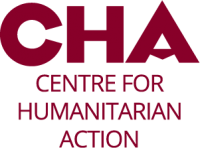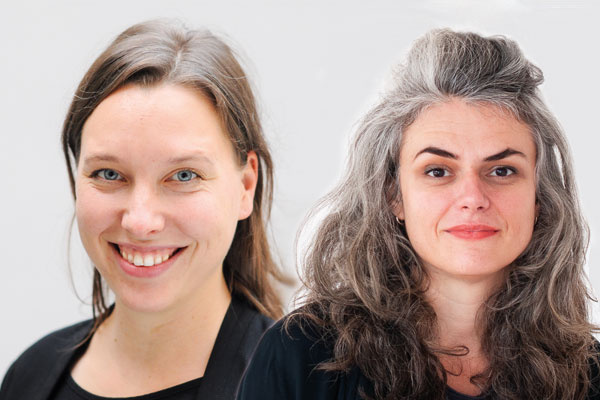| Autor*in: | Dr Andrea Steinke and Sonja Hövelmann |
| Datum: | 3. Oktober 2023 |
As German Foreign Minister Baerbock recently stated, loss and damage is the Pandora’s box of climate politics. It is a Pandora’s box for humanitarians as well. On the one hand, there is an imminent danger that humanitarian actors are double-counting humanitarian disaster relief as loss and damage – essentially treating the future loss and damage fund as a new source of revenue to cover funding gaps. On the other hand, those countries expected to pay future loss and damage claims might misuse humanitarian aid to divert more substantial payments.
Thus, humanitarian actors might actually undermine the initial claims of loss and damage as compensation, explicitly by cashing in or implicitly by allowing other actors to ‘humanitarianise’ the fund.
However, humanitarians should confidently participate in this conversation. More importantly, they need to develop an inner moral compass guiding their future humanitarian work in the climate emergency. They can support and should advocate for the principles of loss and damage to be accepted as critical and morally just, as Mia Mottley, the Prime Minister of Barbados and initiator of the Bridgetown Initiative on climate finance, said in her opening speech at COP27. Moreover, the loss and damage debate offers an opportunity to change humanitarian narratives.
The humanitarian kairos moment
It might be a double-edged sword for humanitarians to address loss and damage through the lens of climate justice. Indeed, Hugo Slim suggests that humanitarians can only make a limited contribution here and can only help achieve ‘disaster justice’ and not climate justice.
But change is afoot. The voices questioning whether the humanitarian system is fit for purpose are becoming louder. Not just broke but broken, they say. Stalling efforts on reform (not to mention systemic or transformational changes) demonstrate little hope for change from within the humanitarian system. Opportunities that enable change, or ‘kairos’ moments – referring to the ancient Greek for opportune moments – do not come around every day. So, the discourse around loss and damage could be one stepping stone for humanitarians to change gears. It provides momentum to reshape global norms on humanitarian action.
A narrative shift
The loss and damage debate has two windows of opportunity. First, as Hillier and Knox Clarke note, there are opportunities to future-proof humanitarian funding for climate disaster by responding to disasters through obligatory rather than discretionary funding mechanisms and thereby addressing a central shortcoming in the current funding system. By participating in the loss and damage debate, they can capitalise on claims for more obligatory funding and move the debate also in humanitarian financing instruments. Secondly, there is an opportunity for a shift from charity-based to justice-based narratives. The loss and damage debate can offer opportunities to develop new narratives for humanitarian action that place greater emphasis on responsibility, partnership and transformation, and to replace the underlying predominant narrative of philanthropy. It is an old debate that natural disasters are not ‘natural’. But by establishing connections between warming oceans and the heavy rainfalls leading to the floods – for example in Derna, Libya calling for a humanitarian response, stories and narratives on relationships of responsibility can be built.
Language matters in policy, as Carling shows, and in how norms are constructed. The discourse on global responsibility for loss and damage triggered by the climate crisis offers options for new narratives, new ideas and ways of thinking, and new relationships of accountability across society but especially in the humanitarian sector.
For example, humanitarian action is strongly focused on immediacy, blocking out the past and future. This is tangible in the narratives that explain why more humanitarian money is needed. Saez and Byrant show how those narratives focus on exceptionalism and charity and thus perpetuate neocolonial and unjust relations while avoiding addressing past entanglements.
Humanitarians are often focused on the present. But they can no longer ignore the past and the future. The boundary between what is considered for loss and damage compensation and what can be addressed with disaster relief funding depends on how a disaster is contextualised. For example, the 2010 earthquake in Haiti was dubbed a 500-year disaster, referring to the historical and structural conditions which resulted in such massive destruction. An exploitative colonial plantation economy triggered a chain of events – most notably deforestation and soil erosion – leading to high levels of environmental degradation and subsequent unregulated and unsafe urbanisation that in an interplay with other socio-political and socio-economic factors enhanced the earthquakes impacts. The exploitation of Haitian resources allowed Europe to industrialise, to emit the high levels of CO2 that initiated climate change as we know it today. And again, Haiti pays the price. On a global scale, Haiti is among the countries most affected by climate change risks.
Humanitarian action alone was insufficient to provide the level of support that the Haitian earthquake victims required; in the future climate justice would be one way to address the decades-long factors that exacerbated the earthquake’s impacts.
Therefore, a holistic approach is needed, and one that humanitarians should strive to support. The recognition of the different responsibilities of states for the climate crisis according to the Paris Agreement – common but differentiated responsibilities and respective capabilities – enables more justice-based approaches. It also puts governments of countries affected by climate emergencies in a new position to write the story. Ejaz and Najam exemplify how Pakistan, following the floods in 2022, became a dominant ‘maker’, shaping its own climate narrative at COP27. Pakistan pushed for ‘climate reparations’ as it expressed a ‘deep sense of injustice’ facing $30 billion in damages from severe flooding but emitting less than 1% of global emissions
This is an ‘and’ situation
Let us be clear: humanitarian aid will not and cannot be the solution to either the climate crisis or to the question of how to operationalise loss and damage funding. But – like national governments, international bodies, and local entities – humanitarian actors are part and parcel of the solution, in the big ‘mosaic of solutions’ demanded by the Maldives’ Environment Minister Aminath Shauna at COP27. This is because they are the ones mandated to intervene in disasters directly and indirectly caused by climate change, because of their particular expertise and skill set in the matters at hand, and last but not least because preventing and alleviating human suffering is the purpose of all humanitarian action. Humanitarian organisations can amplify the demands of those who have contributed least to the climate crisis but who bear its biggest risks and losses, for a loss and damage fund that goes beyond humanitarian action.
This is not a humanitarian ‘either-or’ situation, it is an ‘and’ situation. It is not a choice between either justice or disaster relief. Powerful emitter states are trying to divert demands for justice and compensation by ‘humanitarianising’ loss and damage. Humanitarians can actively object to that in word and deed and still provide urgently needed relief – by capitalising on the justice-based narratives of the loss and damage debate and by advocating for additional and obligatory funding for humanitarian disaster relief instead of ‘humanitarianising’ a loss and damage fund.
The challenges deriving from the tension between the two perspectives of aid and activism are not necessarily a bad thing, as Söderberg and Knox Clarke stated elsewhere. This productive dissonance can urge humanitarians to leave their comfort zone, and that’s when real change happens.
It may mean that humanitarians move from being borderline complicit in upholding the status quo that makes much of humanitarian assistance necessary in the first place, to becoming partners – real partners – to those affected by human suffering past, present and future. Developing a robust position on loss and damage means getting your narratives ready. The time is now.
Dr Andrea Steinke and Sonja Hövelmann are research fellows at the Centre for Humanitarian Action (CHA).
This article is co-published by CHA and the Humanitarian Practice Network (HPN).




Relevante Beiträge
Is it right to count humanitarian aid as loss and damage?
29.08.2023Klimawandel und Humanitärer Wandel
At a turning point - climate change and the responsibilities of humanitarian actors
17.10.2022